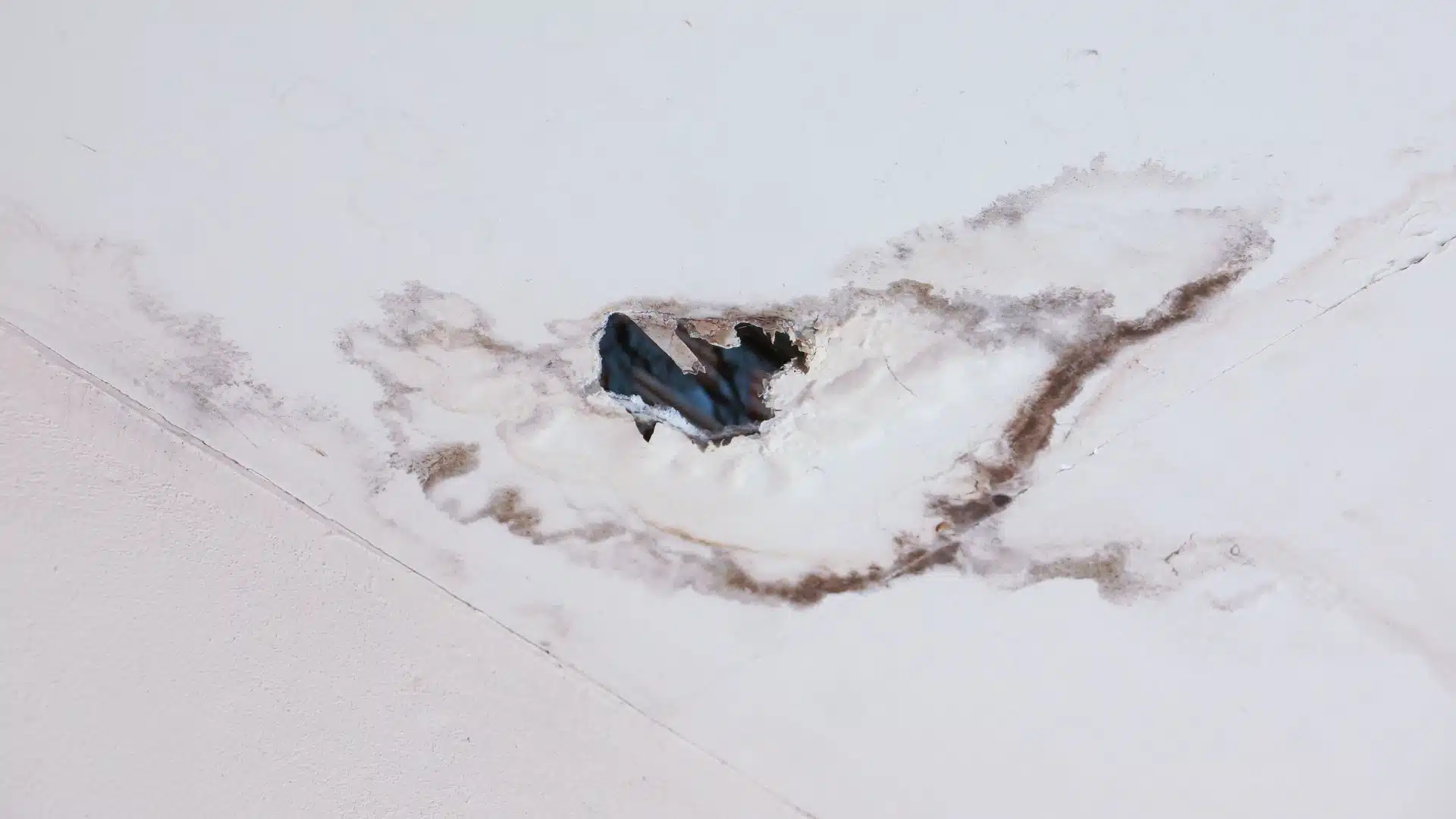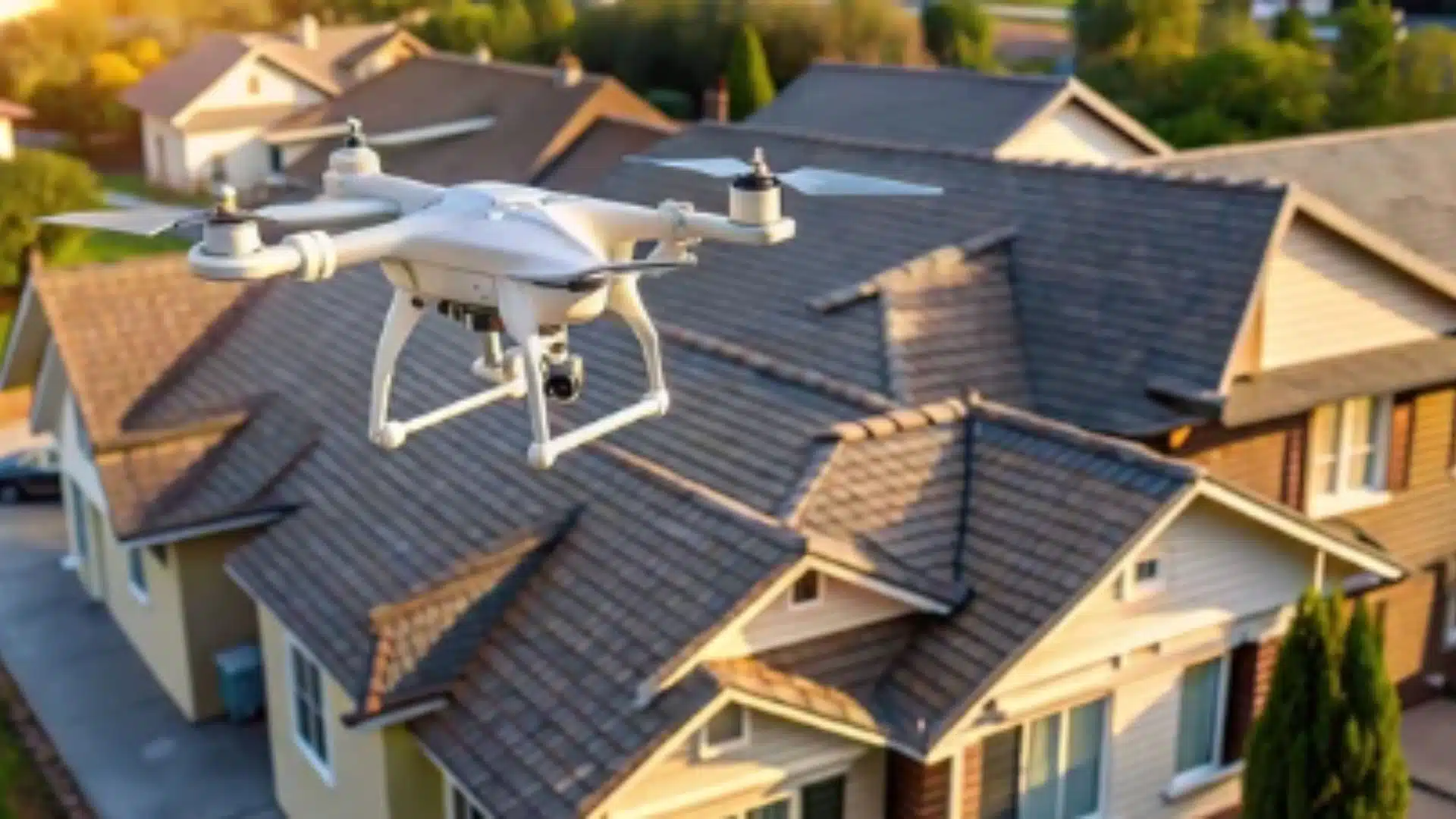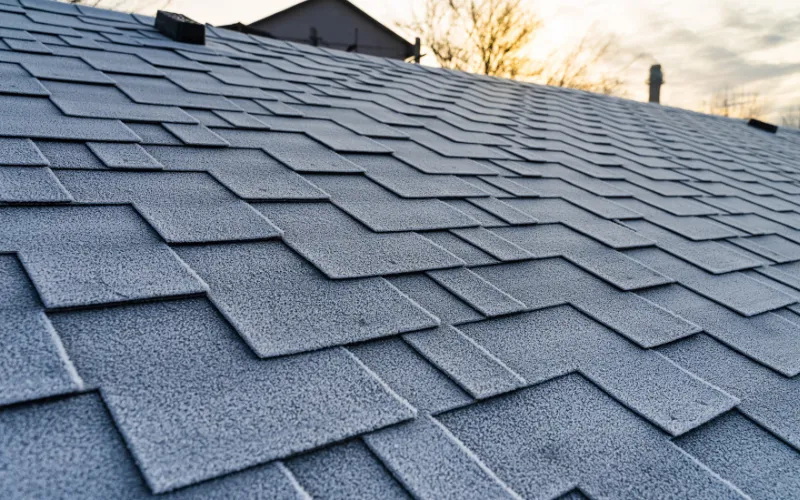Identifying roof damage early is essential to safeguarding your home and avoiding costly repairs. Roof damage often begins small, and if left unchecked, it can lead to structural issues that require expensive fixes. By spotting roof damage early, you can protect your home’s structure, prevent further damage to your interior, and ensure your roof lasts longer. For homeowners looking for a best roofing contractor near me, knowing the signs of damage can help you take action before it escalates.
Start Inside: Interior Signs of Roof Damage
Attic Inspection
When checking for roof damage, start with the attic. The attic is often the first place where damage appears, especially when water begins leaking in. Here’s what to look for:
- Leaks: Water droplets or streaks on the attic ceiling or walls can indicate a roof leak.
- Dark Spots: These stains usually suggest water intrusion from the roof, potentially pointing to damaged shingles or flashing.
- Holes or Sagging Sheathing: Sagging wood in the attic is a clear sign of water damage that has weakened the roof structure.
These signs typically indicate water intrusion, which may stem from issues like underlayment failure or damaged roof shingles. If you notice these signs, contact a roofing company near you to assess the damage before it worsens.
Learn more about attic inspection and roof damage.
Ceiling and Wall Stains
Water stains, mold, and mildew on your ceilings and walls suggest that moisture is getting into your home from the roof. These stains are often linked to roof leaks, which can happen in areas where shingles are missing or flashing is damaged.
- Water Stains: Yellow, brown, or discolored patches on the ceiling are usually signs of a roof leak.
- Mold or Mildew: Mold growth on walls or ceilings indicates that moisture has been lingering for a while, pointing to a roof leak or poor ventilation.
If you spot stains on your ceilings or walls, inspect the roof above these areas for potential damage. Contacting a best roofing contractor near me for a roof inspection can help address the issue quickly before it worsens.
Sheathing Decay
Sheathing, or decking, is the structural support for your roof. If you notice sagging ceilings or visible wood decay in your attic, it’s a sign that water has been damaging your roof for some time.
- Sagging Ceilings: If the ceiling is sagging, it means water has been accumulating in the attic, causing damage to the sheathing and weakening the structure.
- Visible Wood Decay: This is a clear sign of prolonged moisture exposure, and it’s often caused by leaks in the roof that have gone unnoticed for an extended period.
Sheathing decay requires immediate attention as it can severely compromise the integrity of your roof. If you notice any of these issues, it’s important to call a roofing contractor for a thorough roof inspection.
Mold or Mildew
Persistent dampness or mold in your attic or upper walls is another clear indication of roof damage. Mold thrives in damp conditions, and if left unchecked, it can spread quickly, damaging insulation, wood beams, and other materials.
- Persistent Dampness: If your attic feels unusually damp, it’s likely due to a roof leak that is allowing moisture to penetrate the home.
- Poor Ventilation: Inadequate ventilation exacerbates moisture problems, encouraging mold and mildew growth.
Mold in the attic or on upper walls is a serious issue that needs to be addressed right away. If you suspect your roof is the cause, consider calling a best roofing contractor near me to evaluate and repair the damage.
Read more about mold prevention and how it relates to roof damage.

By keeping an eye out for these interior signs of roof damage, you can catch problems early and prevent more costly repairs down the road. Regularly checking your attic and ceilings can help identify issues before they escalate. If you notice any of these signs, it’s essential to contact a best roofing contractor near me to assess the situation and recommend the necessary repairs. Early intervention is key to maintaining the health of your roof and home.
Advanced and Hidden Damage Detection
Drone Inspections
Drone inspections are an innovative and efficient way to detect roof damage that may not be visible from the ground. Equipped with AI-powered cameras, drones can capture high-resolution images of your roof, even in hard-to-reach areas, allowing for a more thorough inspection without the need for scaffolding or ladders.
- Hard-to-See Damage: Drones are particularly effective at identifying damage that might be missed during a standard roof inspection, such as missing granules or small cracks that could lead to leaks down the line.
- Granule Loss: Missing granules are a common sign of aging shingles, and drones can easily spot them, especially in areas like valleys and gutters where granules tend to collect.
- Small Cracks: Even minor cracks that could eventually cause leaks can be identified with drone technology, ensuring that even subtle damage is caught early before it worsens.
For hard-to-see damage or large roofs that are difficult to access, drone inspections provide an efficient and detailed analysis. If you suspect hidden damage, working with a roofer Gulfport, MS who uses drone inspections like Integrity Roofing can help ensure no issues go undetected.
Learn more about how drone inspections can help identify hidden roof damage.
Professional Inspections
While DIY inspections are useful for identifying visible roof damage, some issues require the expertise of a professional roofer.
- When to Call a Professional: If you notice signs of structural damage, such as sagging rooflines, or suspect hidden leaks that aren’t visible during a visual inspection, it’s time to contact a roofer Gulfport, MS for a professional evaluation.
- Expert Assessments: A professional roofer has the knowledge and tools to conduct a comprehensive inspection, identifying structural problems, hidden leaks, and potential issues that might not be apparent to an untrained eye. These professionals also know how to safely navigate your roof and assess any damage in a way that minimizes the risk of further harm to your home.
For in-depth inspections, it’s best to rely on a professional roofer who can assess all areas of your roof and recommend the best solutions for repair or replacement.
Safety Tips for Roof Inspections
Inspecting your roof can be a dangerous task, especially if you’re not using the proper safety precautions. Here are some essential safety tips to keep in mind when conducting a roof inspection.
Binoculars or Zoom Cameras
If you’re uncomfortable climbing onto your roof, using binoculars or a zoom camera is a great way to inspect the roof from the ground.
- Ground-Level Inspection: This method allows you to check the condition of the shingles, flashing, and other components without the risk of climbing. Using binoculars or a zoom lens will enable you to spot damage like missing shingles, sagging, or discoloration from a safe distance.
This approach can help you identify obvious roof issues and give you a clearer idea of whether a professional roofer in Gulfport, MS needs to be called for further investigation.
Climbing Safety
If you need to climb onto your roof for an inspection, always take the necessary precautions to stay safe.
- Use Proper Equipment: Always use a sturdy ladder placed on stable ground. Make sure the ladder is tall enough to give you easy access to the roof without having to overreach.
- Wear Proper Footwear: Wear shoes with good grip to prevent slipping, especially when the roof is wet or covered with debris.
- Never Work Alone: Having someone nearby is essential in case of an accident. If you’re not comfortable climbing the roof, it’s always safer to call a professional roofer.
By following proper climbing safety measures, you can minimize the risk of injury while inspecting your roof.
Avoid Wet or Icy Roofs
One of the most dangerous times to inspect your roof is when it is wet or covered with ice.
- Risk of Slipping: Wet or icy conditions significantly increase the risk of slipping and falling off the roof. Always wait for dry weather before climbing onto your roof for an inspection.
- Safety First: If you must inspect your roof during colder months, use non-slip footwear and consider hiring a professional roofer to inspect the roof for you.
If the roof is too slippery, it’s better to leave the inspection to a qualified roofer Gulfport, MS who has the right equipment and training to safely navigate hazardous conditions.
By following these safety tips and knowing when to call in a professional roofer, you can ensure a safer and more thorough roof inspection. If you suspect hidden damage or are unsure about climbing on your roof, reach out to a roofer Gulfport, MS for expert advice and a professional evaluation. Safety should always be a priority when it comes to roof inspections.
Key Resources for Further Reading
For those looking to dive deeper into roof inspections and damage detection, there are several authoritative resources that offer detailed checklists, visual guides, and expert advice. These resources are valuable tools to help homeowners and property managers identify issues early and make informed decisions about roof maintenance and repairs.
- GAF: How to Identify Roof Damage and What to Look For
GAF provides homeowners with expert advice on what to look for during a roof inspection, including how to identify damage caused by weather events, aging, and wear. This guide is a great starting point for anyone looking to spot roof damage early.
Visit GAF’s roofing guide. - SafetyCulture: Free Roof Inspection Checklist
SafetyCulture offers a free checklist to help homeowners and contractors conduct thorough roof inspections. It includes steps to check for leaks, structural issues, and other signs of damage.
Explore the SafetyCulture checklist.
These resources provide in-depth checklists, step-by-step guides, and professional recommendations to help homeowners assess their roofs. If you’re unsure about any of the signs you find, it’s always a good idea to contact a roofing company Gulfport, MS for a more detailed inspection.
Summary Table: Common Signs of Roof Damage
| Sign/Issue | Where to Look | What It Means |
| Missing/Cracked Shingles | Roof surface | Vulnerability to leaks |
| Curling/Buckling Shingles | Roof surface | Aging or poor installation |
| Granule Loss | Gutters/Downspouts | Shingle wear, aging roof |
| Sagging Roof | Roof line | Structural damage |
| Water Stains/Mold | Ceilings/Attic | Active leaks, moisture intrusion |
| Damaged Flashing | Around penetrations | Potential leak points |
| Moss/Algae Growth | Roof surface | Retained moisture, possible rot |
| Visible Nail Heads | Roof surface | Installation issues, potential leaks |
This table offers a quick overview of the most common signs of roof damage, where to look for them, and what they mean for your roof’s integrity. If you notice any of these issues, it’s important to act quickly and consult a roofing company Gulfport, MS to prevent further damage.
Conclusion
Regular roof inspections are essential for detecting damage early and preventing costly repairs. Whether you notice water stains in your attic or cracks in your shingles, catching these issues before they escalate can save you a significant amount of money in the long run. It’s important to inspect your roof periodically, especially after major weather events or over time as your roof ages.
If you identify significant damage or are unsure about your findings, it’s always a good idea to seek help from a professional roofing company Gulfport, MS. A certified roofer can provide an expert evaluation, offer solutions, and ensure that your roof is properly maintained to protect your home for years to come.
Contact a trusted roofing company Gulfport, MS to schedule your next roof inspection today!
Frequently Asked Questions (FAQ)
1. How often should I inspect my roof for damage?
It’s recommended to inspect your roof at least twice a year, ideally in the spring and fall, to catch any damage caused by weather changes. Additionally, after major storms or high winds, a roof inspection can help identify damage early and prevent costly repairs.
2. What are the most common signs of roof damage?
Some of the most common signs include missing or cracked shingles, water stains on ceilings or walls, mold or mildew growth in the attic, and sagging rooflines. These indicate potential leaks or structural issues that should be addressed by a professional roofing company.
3. Can I inspect my roof myself, or should I hire a professional?
You can do a basic inspection from the ground using binoculars or a zoom camera to look for obvious issues like missing shingles or damage. However, for a more thorough inspection—especially if you suspect hidden damage—it’s best to call a professional roofing company Gulfport, MS, to ensure the roof is properly evaluated and safe.
4. How do drones help in roof inspections?
Drones equipped with high-resolution cameras can capture detailed images of your roof, even in hard-to-reach areas. They can identify damage such as small cracks or granule loss that may be missed during manual inspections, making them an excellent tool for detecting hidden damage.
5. What should I do if I find roof damage?
If you notice any signs of roof damage, such as leaks, missing shingles, or structural issues, it’s important to act quickly. Contact a roofing company Gulfport, MS for a professional inspection. They can assess the damage, provide repair recommendations, and prevent further damage to your home.




